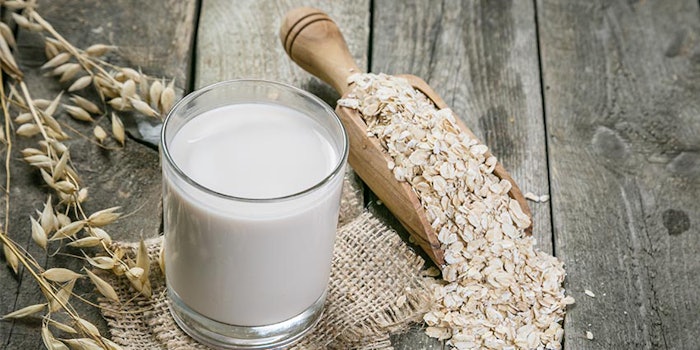
Take a stroll through your local grocery store and you will likely find a plethora of options for dairy alternative milks in the dairy and natural products aisles. Almond, soy, coconut, oat, rice, pea, cashew, and hemp are a few of the more well-known options on the market, but even more niche dairy alternative milks like hazelnut, quinoa and sesame are hitting shelves.
Though it’s still dwarfed by dairy milk, the dairy alternative market is thriving. The U.S. dairy alternative market grew 61% from 2012 to 2018 when it reached $2.3 billion, and is expected to surpass $2.7 billion by 2022 with a compound annual growth rate of 4.4%a. Driving growth is the prevalence of lactose intolerance, increased adoption of veganism and perception that plant-based products are healthier and more sustainable than its animal-based counterparts.
Currently, almond milk has the lion’s share of the dairy alternative market, owning 64-percent of all sales, followed by soy and coconut milk which together account for a quarter of the market. Recently, though, there’s been significant buzz about oat milk, and it could take away market share from category leaders. According to Nielsenb, oat milk sales grew by 50% from 2017-2018 while almond milk sales grew by only 11%.
Oatly is one of most recognizable oat milks and since it was introduced to the U.S. market in 2016, the brand’s distribution increased to more than 2,200 coffee shops and 1,000 grocery stores. After Oatly became available stateside, the popularity of oat milk skyrocketed, and it is so popular in coffee shops that suppliers are struggling to keep up with demand. Oatly is addressing the shortage by opening a new factory that is expected to increase volume as much as tenfold and several major players like Pepsi, HP Hood and Dean Foods launched oat milk products within the last year.
Beyond Dairy Alternatives
Although interest in oat milk is currently on the rise, it is not a new beverage and has actually been around for more than two decades. Oat milk was first developed in Sweden by the founder of Oatly during the early 1990s and Pacific Foods launched an oat milk in 1996. Like other types of plant-based milks, many early iterations of oat milk had flavor and textural flaws. The proliferation of dairy alternative milks over the last decade prompted suppliers to develop new technologies that improve taste and solubility of plant-based ingredients and expanded the job of a flavorist to include making less palatable flavors taste as neutral as possible. The result has been an evolution of flavor for products that once were chalky, astringent and stale to ones that taste milky, creamy and clean.
Oat milk has many advantages compared to other dairy alternative milks. Most brands and consumers want a dairy alternative milk to be reminiscent of dairy milk and many oat-based ingredients used in beverage have a relatively neutral flavor. Other plant-based ingredients like almond and pea have nutty or green notes that come through and need significant masking to taste like dairy milk.











